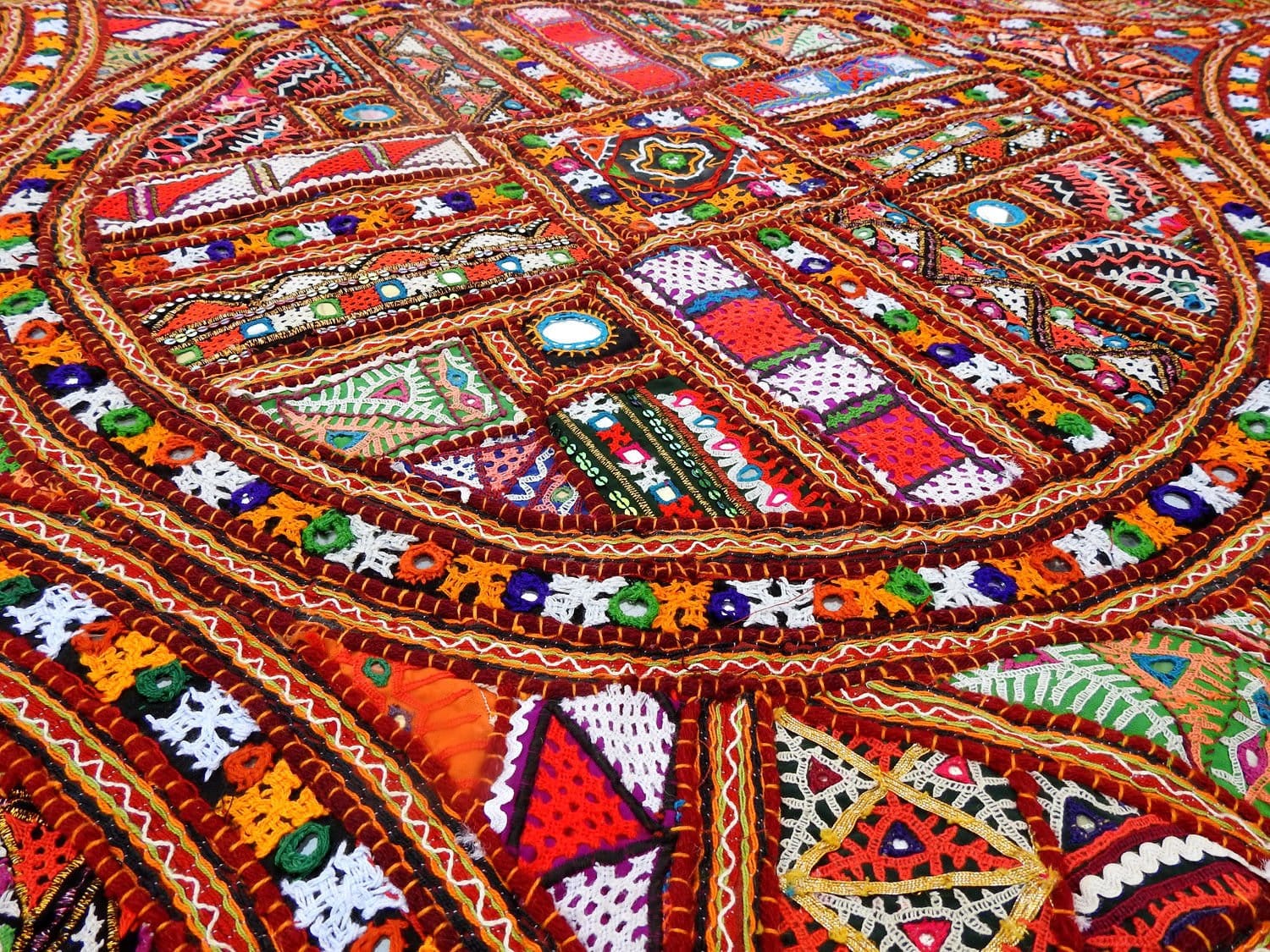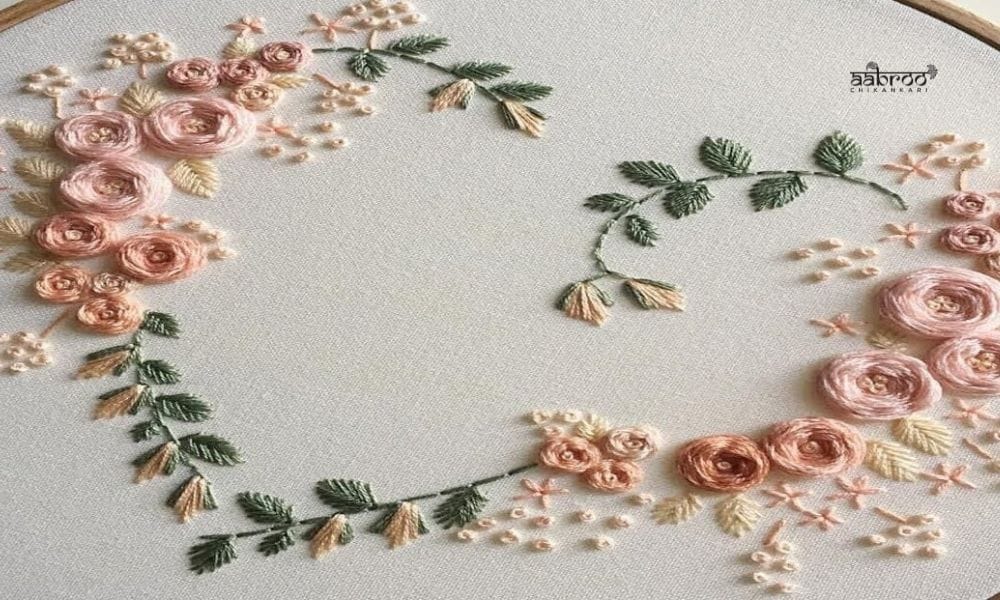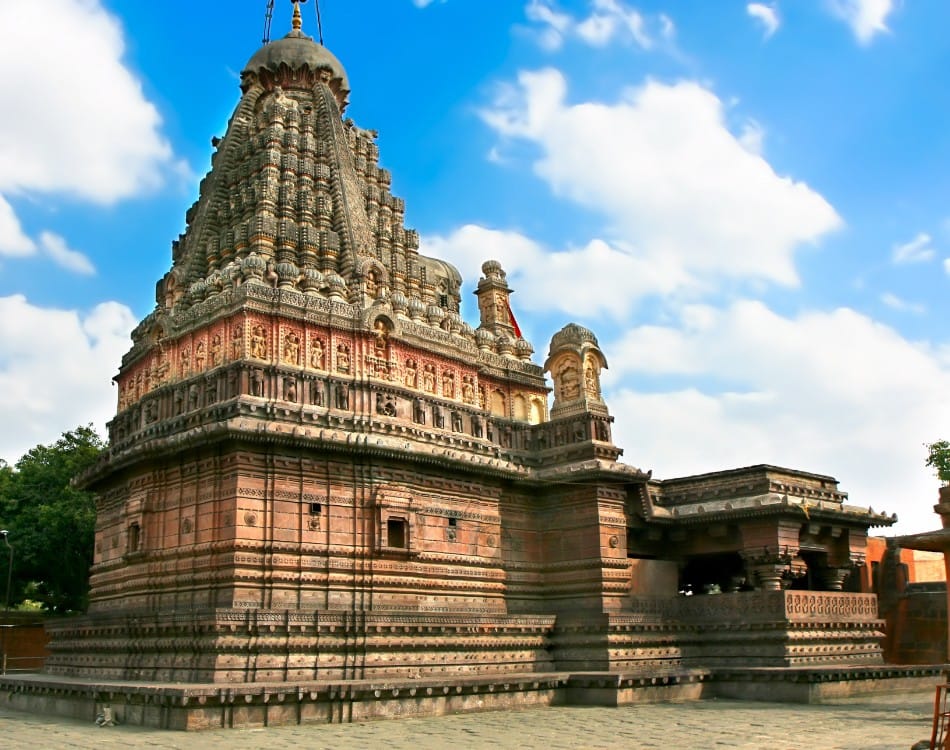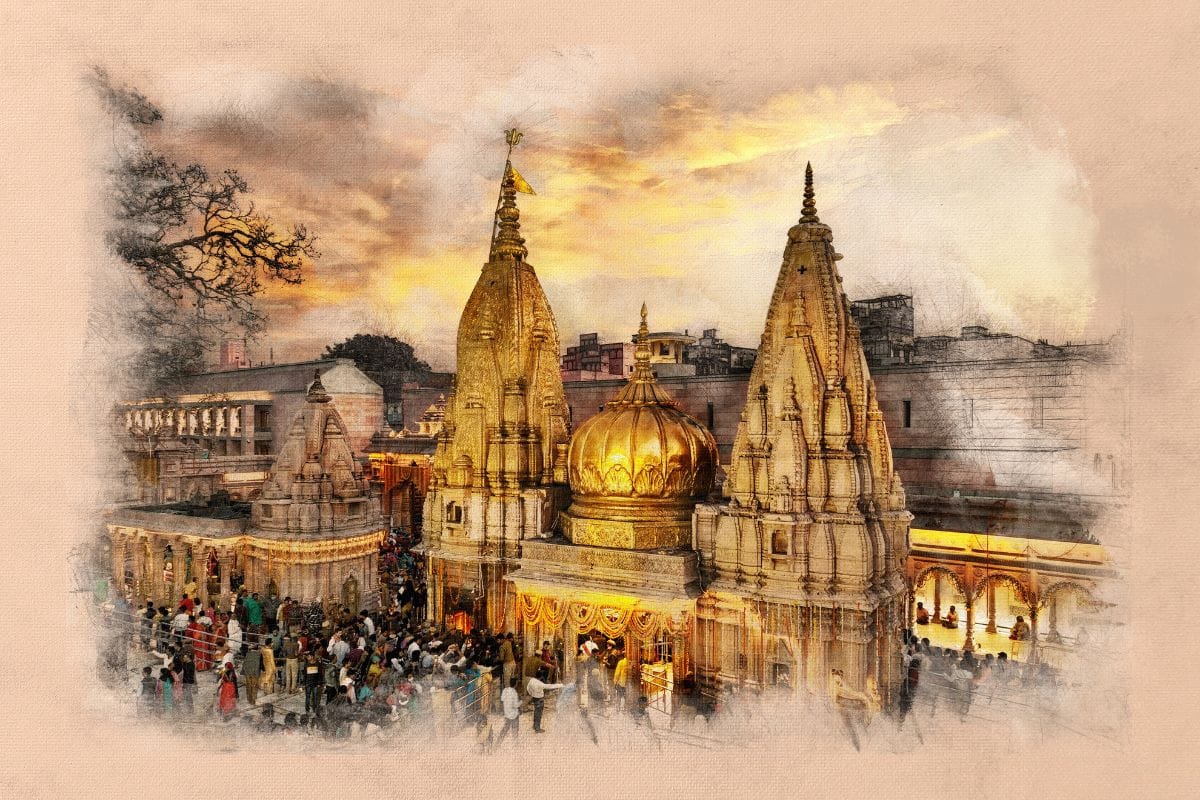
Lippan Art, also known as Mud and Mirror Work, is a traditional mural art form from the Kutch region in Gujarat, India. Characterized by its unique combination of clay, mirrors, and geometric patterns, Lippan art has become synonymous with the rich cultural heritage of rural India. This ancient art form has evolved over centuries and is now celebrated worldwide for its intricate craftsmanship and aesthetic appeal.
What is Lippan Art?
Lippan art involves using a mixture of mud and camel dung to create textured murals on walls, which are then decorated with small pieces of mirror to add reflection and sparkle. Traditionally, Kutch tribal communities, especially the Rabari people, practiced this art form to adorn their homes. The art was primarily created by women and was used to beautify the interiors of rural mud houses, called bhungas.
History and Origin of Lippan Art
People in the Kutch desert region of Gujarat created decorative art using locally available materials like mud and mirrors due to the arid environment and lack of natural resources. The Rabari women have long been known for creating and popularizing Lippan art. This affordable decorative art form relies on natural materials and their creative skills.
Over time, what began as a form of home decoration evolved into a respected art form. The artistry of Lippan has now gained international recognition and is no longer limited to house interiors but has expanded into modern decor, handicrafts, and gallery installations.
Materials Used in Lippan Art
Lippan art relies heavily on natural and easily accessible materials:
- Mud/Clay: The primary material for creating the murals is a mixture of mud, often combined with camel dung to increase pliability and longevity. The mixture is spread over the surface to create the base design.
- Mirrors: Small, intricate pieces of mirrors (either circular, square, or in other shapes) are embedded in the clay. These mirrors reflect light and add vibrancy to the artwork.
- Wooden or Metal Tools: Simple tools are used to shape and carve the patterns in the mud before it hardens.
- White Clay Paste: Modern Lippan artists often use white clay paste to enhance the art’s aesthetics, giving it a more polished look for urban homes.
Techniques in Lippan Art
The technique of creating Lippan art is as unique as the artwork itself. Here’s a step-by-step breakdown of the process:
- Preparation of the Surface: The first step is to create a smooth surface, usually a wall, or a wooden board, for the Lippan work. In traditional homes, this was done directly on the mud walls of the bhungas.
- Design Layout: Using chalk or other markings, the artist outlines the intended design. The motifs often include geometric patterns, nature-inspired elements, or abstract forms.
- Mud Application: The mud and dung mixture is carefully applied to the design to create a 3D effect. The artist uses wooden tools to carve and shape the design.
- Mirror Placement: Mirrors are pressed into the wet mud in specific patterns, often aligned symmetrically. The placement of mirrors is crucial as it defines the characteristic look of Lippan art.
- Drying and Finishing: Once the design is complete, the mud is left to dry. Modern adaptations sometimes include a layer of varnish or paint to protect and enhance the artwork.

Common Themes and Motifs in Lippan Art
Lippan art is known for its geometric precision and symmetrical patterns. Some of the most common themes and motifs include:
- Geometric Designs: Circles, triangles, and other geometric shapes are a hallmark of Lippan art, providing balance and symmetry.
- Floral Patterns: The incorporation of floral designs adds an organic and decorative element to the otherwise geometric framework.
- Nature-Inspired Motifs: Peacocks, camels, birds, and other elements from nature are often seen in Lippan art. These motifs reflect the artist’s surroundings and the rural lifestyle.
- Religious Symbols: Some Lippan artwork includes religious symbols such as the swastika or the Om, which carry spiritual significance.
Modern Adaptations of Lippan Art
While Lippan art was traditionally used to decorate the interiors of village homes, it has made its way into modern urban spaces in several ways:
- Wall Art and Panels: Artists create standalone lippan panels that can be hung as decorative pieces in urban homes, making their work accessible to city dwellers.
- Furniture: Modern artisans incorporate Lippan designs into furniture such as tables, chairs, and even mirror frames. The reflective surfaces combined with the earthy tones of the mud create a rustic yet sophisticated aesthetic.
- Home Decor Items: Besides walls, Lippan art is now used to decorate a variety of home decor items, such as trays, coasters, and photo frames, offering a contemporary twist to this ancient craft.
- Workshops and DIY Kits: With the growing popularity of Lippan art, many artisans and designers have started offering Lippan art workshops. Additionally, DIY kits are available, allowing art enthusiasts to create their own Lippan murals at home.

Lippan Art and Sustainable Craftsmanship
One of the most appealing aspects of Lippan art is its sustainability. Since it uses natural materials like mud and mirrors, it has minimal environmental impact. This eco-friendly approach is gaining appreciation in today’s world, where there is a growing focus on sustainable and environmentally conscious art forms.
Why is Lippan Art Gaining Popularity?
- Cultural Revival: With a global interest in traditional crafts, Lippan art has seen a revival. The promotion of Indian handicrafts through exhibitions and online platforms has brought this art form into the spotlight.
- Eco-Friendly Appeal: The sustainable nature of Lippan art aligns well with modern values of environmental responsibility.
- Customization: Lippan art is highly customizable, allowing artists and homeowners to adapt it to contemporary tastes. From intricate traditional murals to minimalistic modern designs, Lippan art offers a wide range of possibilities.
- Aesthetic Appeal: The use of mirrors gives Lippan art a unique and mesmerizing effect. The play of light on the mirrors creates a dynamic visual experience that changes with the environment, making it a visually appealing choice for modern decor.
Conclusion
Lippan art is a beautiful and intricate craft that combines tradition, sustainability, and aesthetic appeal. From its origins in the mud houses of rural Gujarat to its growing popularity in urban homes, this art form continues to evolve and inspire. The timeless appeal of Lippan art lies in its ability to connect the past with the present, blending the natural with the ornamental in a way that resonates with today’s art lovers.















